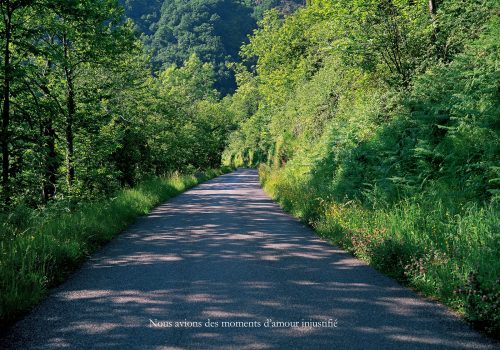For Michel Houellebecq the first and most important operation consists in homing in on and marking out a segment of the world, an entity that denies externality and rejects the out-of-frame.
The image then becomes a part of the world that is the world in its entirety. In the same way, poetry for Houellebecq is a totalising discourse. The verse is a word, a new, unmodifiable unit, a complete, self-sufficient, indivisible whole with its own internal logic and beauty, beyond the realm of ideas. As Houellebecq has often put it, there is no such thing as an intelligent poet.
The other operation consists in isolating and juxtaposing verse and image; in creating indissociable totalities out of separate elements; in implying that the poem is a discovery of preexisting words and this photographed fragment of the world something that had been waiting to be found: this grey, bleached-out beach, empty sky, motionless rock, cold blue surface.
















